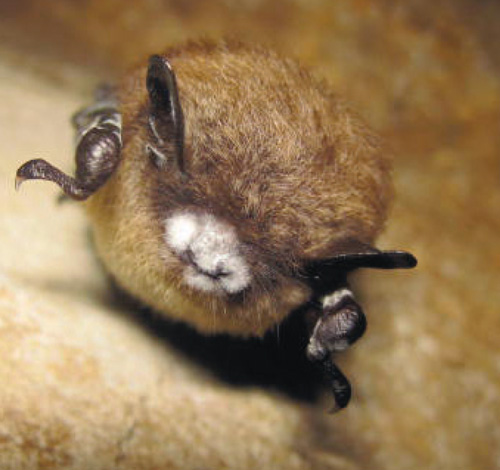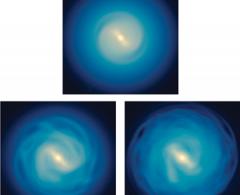
This Article From Issue
March-April 2015
Volume 103, Number 2
Page 89
DOI: 10.1511/2015.113.89
In this roundup, associate editor Katie Burke summarizes notable recent developments in scientific research, selected from reports compiled in the free electronic newsletter Sigma Xi SmartBrief. Online: https://www.smartbrief.com/sigmaxi/index.jsp
Hominin Happy Hour Came Early
The ability to consume alcohol arose much earlier than believed, perhaps as an adaptation that allowed ourancestors to eat rotting fruit without dying. The most ancient evidence of alcohol consumption in humans is from the early Neolithic (circa 10,000 BCE), and so it was thought that humans were unable to eat fermented foods before then. However, a new genetic study suggests the sequence of events is reversed—that the ability to digest ethanol predated the practice of directed fermentation. Researchers led by Steven Benner of the Foundation for Applied Molecular Evolution used ancestral primate DNA to resurrect versions of the first enzyme encountered in the digestive tract that catalyzes alcohol digestion. The team found that 10 million years ago a single mutation endowed the capability of alcohol digestion in the common ancestor of humans, chimpanzees, bonobos, and gorillas. At that time, these primate ancestors were beginning to move across land, and the researchers posit that an adaptation to digest fallen fruit could have provided a selective advantage. This research opens the door for studies of the hominin palate’s evolution, the ethanol content of the fruits in primate diets, and the evolutionary biology of alcohol abuse.

Wikimedia Commons.
Carrigan, M. A., et al. Hominids adapted to metabolize ethanol long before human-directed fermentation. Proceedings of the National Academy of Sciences of the U.S.A. 112:458 (January 13)
An Antibiotic Breakthrough?
Teixobactin, a compound isolated from a soil microbe, could be the first major antibiotic breakthrough since the 1980s. Soil microbes were a major source of novel antibiotics until culturable sources were exhausted by the 1960s as resistance to them arose. A recently developed technique called the iChip enabled researchers to grow and screen some of the unexplored bacteria that cannot be cultured conventionally. The new drug acts on gram-positive bacteria, a class that includes Clostridium difficile (inflammatory bowel disease) and Staphylococcus aureus (staph infection). The antibiotic destroys the cell wall by targeting a lipid (fatty molecule) in its structure, rather than proteins targeted by antibiotics such as penicillin. Because lipids generally evolve more slowly than proteins, the emergence of resistance to lipid-targeting antibiotics such as vancomycin takes a long time. In lab trials, all mice infected with a lethal methicillin-resistant S. aureus (MRSA) infection and then treated with teixobactin lived. The researchers hope to begin clinical trials in a few years. (Read more in “Thoroughly Modern Microbes”.)
Ling, L. L., et al. A new antibiotic kills pathogens without detectable resistance. Nature 517:455 (Published online January 7)
Deep-Sea Supernova Evidence
New insights about distant supernovae could come from the bottom of the ocean, according to a study led by Anton Wallner of Australian National University. Over millions of years, tiny particles produced by exploding stars can reach Earth and eventually settle into ocean sediments. The researchers collected sediment samples from the Pacific Ocean’s floor and analyzed them for a specific plutonium radioisotope, 244Pu. Because this isotope has a half-life of just 81 million years, any 244Pu found there cannot be original to the Earth; it must have been deposited within the last few hundred million years in explosive events such as supernovae. Given how many supernovae astronomers know have occurred during this timeframe, the researchers expected to find two orders of magnitude more 244Pu than is actually present. The discrepancy indicates a flaw in current supernova theories. Wallner and colleagues suggest that heavy elements such as plutonium might form only during rare types of explosive events, not in all supernovae.
Wallner, A., et al. Abundance of live 244Pu in deep-sea reservoirs on Earth points to rarity of actinide nucleosynthesis. Nature Communications doi:10.1038/ncomms6956 (January 20)
Mysterious Bat Disease Progress
White-nose syndrome, caused by the pathogen Pseudogymnoascus destructans, has caused precipitous declines in bat populations of eastern North America since its emergence in 2007. Symptoms of the disease, such as arousal from torpor during hibernation and a telltale white fungal growth on unfurred skin, were quickly identified, but the mechanisms behind them are still being worked out. A new study elucidates some of the physiological effects of white-nose syndrome that occur before visible symptoms set in. The research, led by Michelle Verant of the University of Wisconsin at Madison, shows that infection with the pathogen doubles the amount of fat energy burned in hibernating little brown bats (Myotis lucifugus), and that this effect emerges well before the symptomatic behavior of waking from torpor.

Wikimedia Commons.
Verants, M. L., et al. White-nose syndrome initiates a cascade of physiologic disturbances in the hibernating bat host. BMC Physiology 14:10 (December 9)
Volcanic Iron Strangled Early Life
About 2.4 billion years ago, a surge of oxygen filled Earth’s atmosphere, transforming life and the planet. A novel hypothesis explains why this Great Oxidation Event happened several hundred million years after oxygen-emitting photosynthetic cyanobacteria appeared on the scene: Submarine volcanic eruptions belched iron into the sea, suppressing them. Others have proposed that oxygen was toxic to these early organisms or that the lack of some nutrient held them back. Elizabeth Swanner of the University of Tübingen in Germany and her colleagues showed that the growth rate of modern-day cyanobacteria is suppressed when exposed to levels of iron (Fe2+) comparable to those in ancient sediments just predating the Great Oxidation. Although iron is often a fertilizing nutrient for these organisms today, at the high concentrations present billions of years ago it acts as a toxin.
Swanner, E. D., et al. Modulation of oxygen production in Archaean oceans by episodes of Fe(II) toxicity. Nature Geoscience doi:10.1038/ngeo2327 (Published online January 5)

American Scientist Comments and Discussion
To discuss our articles or comment on them, please share them and tag American Scientist on social media platforms. Here are links to our profiles on Twitter, Facebook, and LinkedIn.
If we re-share your post, we will moderate comments/discussion following our comments policy.